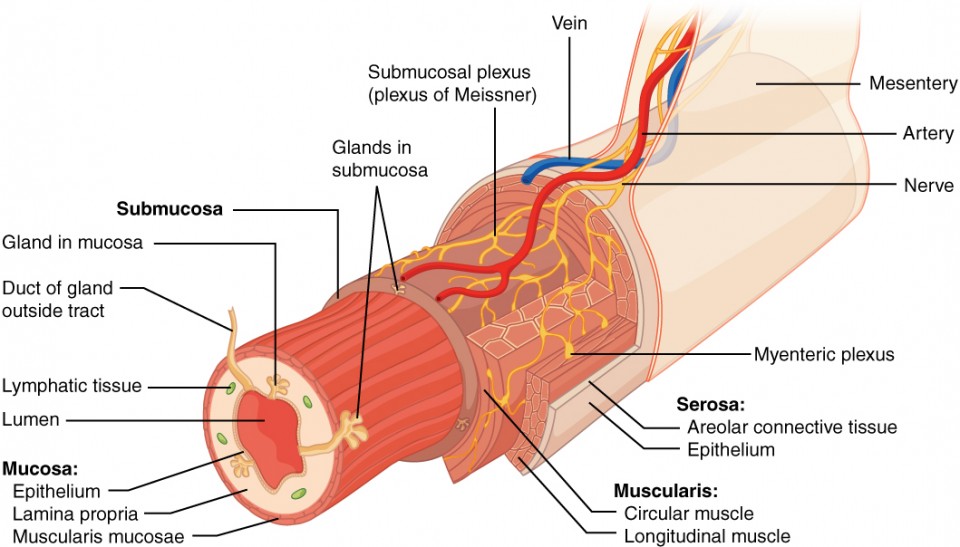Digestion and Absorption - Online Test
Q1.
Read the following statements :
i. In ruminants cellulose digesting bacteria are present in digestive system.
ii. Such digestion by microbial activity is called Anaerobic digestion.
iii. Camels are ruminants lacking omasum chamber.
Answer : Option C
Explaination / Solution:
- In ruminants like cows, buffalos, cellulose digesting bacteria are present in digestive system that release cellulose enzyme.
- Anaerobic digestion is a collection of processes by which microorganisms break down biodegradable material in the absence of oxygen.
- Camel is a psuedo ruminants as it has only 3 chambers instead of 4.
Q2. If an imaginary food contains 5 grams of protein, 4 grams of fat and 10 grams of carbohydrates. Now calculate total calories it would provide ( given 1g protein=4 calories, 1g fat = 10 calories, 1g carbohydrates = 4 calories ) :
Answer : Option B
Explaination / Solution:
Five gram of protein will produce 5 x 4 = 20 calories, 4 g of fat = 4 x 10 = 40 calories and 10 g of carbohydrates = 10 x 4 = 40 calories. So total energy produced is equal to 20 + 40 + 40 = 100 calories.
Q3. Correct sequence of layers in gut wall from inside to outside is :
Answer : Option B
Explaination / Solution:
The wall of alimentary canal is made of four layers performing different functions. The inner most layer is called mucosa followed by submucosa,muscularis and serosa. Theses layers are made of different kind of tissues to perform different function.

Q4. The reflex action of vomiting is controlled by
Answer : Option A
Explaination / Solution:
Vomiting is believed to be controlled by two distinct brain centres—the vomiting centre and the chemoreceptor trigger zone—both located in the medulla oblongata.
The vomiting centre initiates and controls the act of emesis, which involves a series of contractions of the smooth muscles lining the digestive tract.
Q5. Which digestive disorder reduces the absorption of food?
Answer : Option B
Explaination / Solution:
The abnormal frequency of bowel movement and increased liquidity of the faecal discharge reduces the absorption of food leading to diarrhoea.
Q6. Which is a mismatched pair :
Answer : Option C
Explaination / Solution:
The abnormal frequency of bowel movement and increased liquidity of the faecal discharge is known as diarrhoea.
Q7.
Match the following:
| Digestive Disorder | Cause |
| a) Constipation | i) gallstones |
| b) Jaundice | ii) reflex actionanxiety |
| c) Indigestion | iii) intentinal ischemia |
| d) Vomiting | iv) irregular bowel movements |
Answer : Option D
Explaination / Solution:
The causes of indigestion are inadequate enzyme secretion, anxiety, food poisoning, over eating, and spicy food. In constipation, the bowel movements occur irregularly. In jaundice, deposition of bile pigments result in gall stones. A reflex action is controlled by the vomit centre in the medulla.
Q8. Malnutrition covers :
Answer : Option C
Explaination / Solution:
Malnutrition is the condition of having less than required amount of food or more than required amount of food. Both condition is harmful to health. So, malnutrition covers both undernutrition and overnutrition.
Q9. Bacteria responsible for chronic gastritis is :
Answer : Option D
Explaination / Solution:
Chronic gastritis involves swelling or inflammation of the stomach lining. Helicobacter pylori colonizes the stomach and induces chronic gastritis, a long-lasting inflammation of the stomach.
Q10. Regurgitation is more common in infants than in adults. The reason will be:
Answer : Option C
Explaination / Solution:
Regurgitation is the expulsion of material from the pharynx, or esophagus, usually characterized by the presence of undigested food or blood. Regurgitation is used by a number of species to feed their young. Regurgitation is more common in infants than adults because cardiac sphincter is much less effective in infants.
